#UX and UI for startups
Explore tagged Tumblr posts
Text

Parrot logo design - grids behind a great shape
PM us if you need a professional logo:
#logo#business#illustration#entrepreneur#artists on tumblr#branding#creative#startup#grids#parrot#birds#lineart#monoline#shapes#geometry#graphic design#ui ux design
93 notes
·
View notes
Text
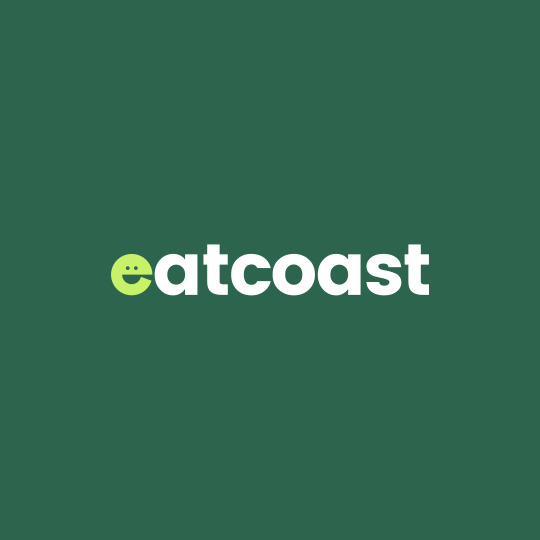
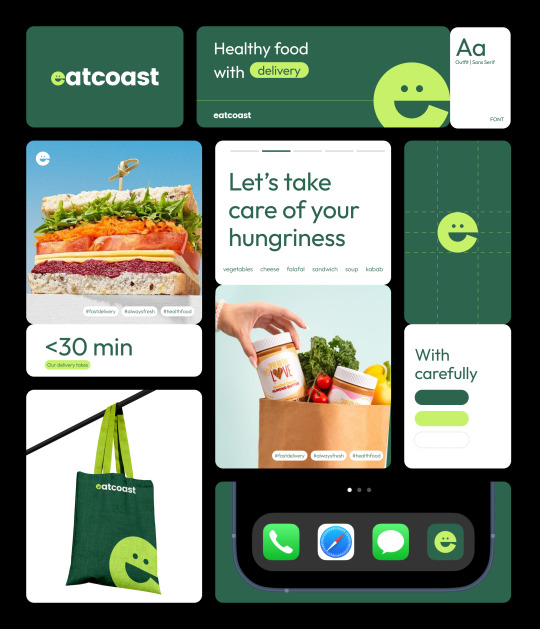
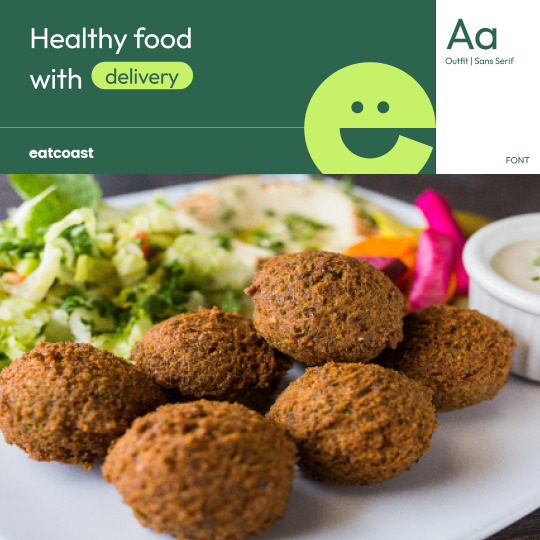

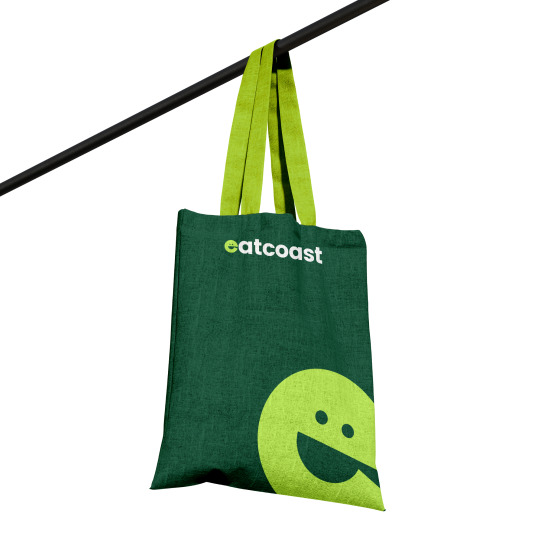
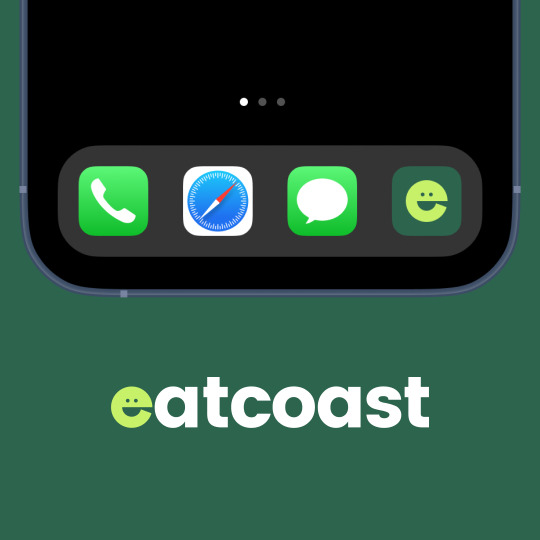
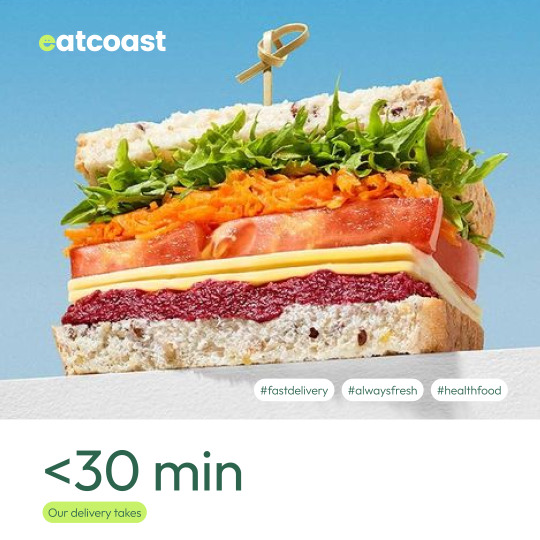
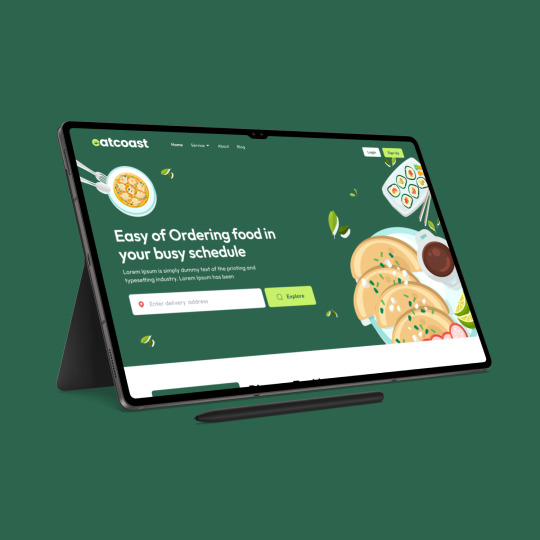
Hungry for branding? So are we!
At Comsci Technologies, we specialize in crafting tailored solutions for businesses of all kinds. Recently, we partnered with EatCoast, a rising food delivery startup, to bring their brand to life. From designing their logo and packaging to creating a seamless UX/UI for their website, we ensured their brand is as appetizing as their food.
Whether it’s branding, website & eCommerce stores, or robust management software, we help businesses thrive globally.
Let’s build your success story next!
www.comsci.tech
Check the project here,
#branding#marketing#logo#business#startup#website#website development#web development#web design#ui ux design#graphic design
2 notes
·
View notes
Text
Above is a presentation about the leading e-commerce development company in India known as Woxro which is located at Koratty, Infopark, Thrissur, Kerala, India. Visit and get to known about the India's leading ecommerce service provider.
#ecommerce development agency#ecommerce development services#ecommerce website development#ecommerce#web developers#web development#web design#web resources#web graphics#ecommerce development company#ui ux design#ui ux company#business growth#online businesses#branding#startup#shopify#digital transformation#web hosting#website#purple#it services
2 notes
·
View notes
Text
50 websites for Web & Mobile design inspiration you may have missed

Develop your visual experience and boost your design skills every day. Here is a list of 50 websites for design inspiration.
A classic that everyone knows: Awwwards, Behance, Dribbble, Pinterest, Muz.li etc.
Discover something new! Join our community in Telegram Channel and get full list of 50 websites for web and mobile design inspiration.
Inspire and stay creative!
#ui ux design#web design#uidesign#ui#ux#website#website design#ios#android#design#technology#startups#inspiration#uiinspiration
2 notes
·
View notes
Text
youtube
Have an awesome app idea but don’t know how to code? No worries! Learn how to bring your concept to life using Figma — the ultimate tool for visually designing app interfaces. Whether you’re a startup founder, product manager, or creative thinker, Figma lets you design interactive screens, create navigation flows, and collaborate with your team in real time. Design smarter, faster, and clearer before development even begins. 👉 Let’s connect on LinkedIn and start building your vision today!
#No-code app design#Figma app prototype#UI/UX design tools#App design without coding#Visual app builder#Figma tutorial#Startup tools#App wireframe#Mobile app design#Collaborative design tools#Youtube
0 notes
Text
Why More Startups and Enterprises Are Outsourcing UI/UX Strategy in 2025

Research consistently shows that businesses that follow top-tier design practices experience up to twice the industry-benchmark growth rate in revenue and shareholder returns. These businesses weave design thinking deep into the fabrics of their digital products. At the core of all these efforts and the resulting success are meticulously crafted UI/UX strategies.
What is UI/UX Strategy?
A UI/UX design strategy (User Interface + User Experience) is an exhaustive framework that guides brands with digital products from the early stages of user research and ideation, through launch, and into continuous optimization. It meticulously defines how an organization truly understands its users, envisions their optimal journey, quantifies the commercial impact of all UI/UX design decisions, and establishes concrete, measurable benchmarks for 'success.'
A potent UI/UX strategy forms the unshakeable bedrock upon which sustainable, user-centric innovation is built.
However, forging a UI/UX strategy that truly cuts through the noise is an incredibly demanding endeavor. It requires a rare mix of profound UX research capabilities, sharp business acumen, solid technical understanding, and the almost artistic ability to distill vast, complex datasets into clear, actionable UI/UX insights.
The Hunt for High-Quality UI/UX Strategists
The hunt for elite UI/UX strategists has become a veritable battleground, with premier agencies and global tech giants actively headhunting top-tier talent.
These strategists operate on a different plane than typical UI/UX designers. While a designer refines the immediate user interface and experience, a strategist functions at a strategic level.
They are the link between ambitious business goals and genuine user needs.
Strategists orchestrate intricate cross-functional collaborations and shape the long-range product vision.
They are skilled negotiators, master ethnographers, and inventive problem-solvers.
They are adept at navigating the often-conflicting demands of multiple stakeholders, the relentless churn of technological evolution, and the constant pressure to deliver tangible business results.
The scarcity of such professionals and the financial investment they command make creating an in-house strategy team an impractical, unattainable dream for most startups and small enterprises.
This is precisely where outsourcing UI/UX strategy has become such a popular solution in 2025.
Outsourcing UI/UX Strategy
The landscape of outsourcing this critical function has matured significantly in recent years. The days of uncertain freelance engagements are gone. Today, organizations, regardless of size, can access global reservoirs of specialized UI/UX strategy talent through:
Meticulously curated online platforms.
Forward-thinking design consultancy firms that are open to all types of professional arrangements.
Via on-demand subscription services.
These professionals use collaboration tools like Miro and Figma to guarantee absolute transparency and unwavering alignment at every project milestone.
That's why, today, even the leanest startup can now harness the same caliber of strategic UI/UX foresight and design leadership that propels Fortune 500 behemoths, all without the burdensome overheads or restrictive long-term commitments of permanent C-suite hires.
Startups and SMEs Outsourcing Their UI/UX Strategies: The Benefits
Outsourcing UI/UX strategy in 2025 delivers both immediate impact and sustained long-term value:
Instant Access to Specialized, World-Class Expertise
The moment a company decides to outsource, it sidesteps the long and costly process of talent acquisition. Instead of dedicating months (and a considerable budget) to recruiting a single, perhaps generalist, UI/UX strategist, businesses can onboard an entire, cohesive team of specialists - UX researchers, data analysts, and interaction designers, alongside UI/UX strategists, within days.
This immediate infusion of top-tier talent, already adept at working together, dramatically accelerates time-to-market. This is a critical benefit for startups eager to make their mark.
For a small enterprise, the in-house alternative means settling for a less specialized UI/UX designer/strategist who, despite best efforts, cannot match the collective intelligence and experience that an outsourced team brings from day one of the discovery phase.
Objective, Unbiased Perspectives & Breakthrough Insights
After the initial engagement, the outsourced team dives into comprehensive UX research by analyzing users, the market, and competitors.
External strategists tackle this crucial phase with a significant advantage - complete objectivity:
They arrive unburdened by internal corporate politics
They have no pre-existing biases towards certain solutions
There is no emotional investment in legacy products or past decisions
This fresh, untainted viewpoint is invaluable in unearthing "unknown unknowns" about a brand and its digital product design ambitions. External strategists are almost incentivized to provide unvarnished truths and highlight opportunities internal team members might miss.
Enhanced Focus on Core Business Activities
As the research crystallizes into a coherent UI/UX strategy and a tangible product roadmap, the client company's internal leadership and core teams can maintain their focus on what they do best - whether that is pioneering new technology, driving sales, or leading marketing initiatives.
The complex, intellectually demanding, and time-intensive work of UI/UX strategy development is expertly handled by the outsourced specialists.
For a startup or SME, diverting key internal personnel from their primary functions to grapple with the nuances of UI/UX strategy can derail essential business operations.
Access to Cutting-Edge Tools, Methodologies, Global Testing Networks
The iterative cycle of designing, prototyping, and rigorously testing with real users is where leading outsourcing agencies truly shine.
These firms make substantial ongoing investments in the latest and most effective research software (for instance, UserTesting, Lookback), sophisticated AI-powered analytics platforms, and maintain access to extensive, diverse global user testing panels.
For most startups and many enterprises, replicating this would be financially impossible and logistically overwhelming.
Thus, outsourced projects benefit from richer, more reliable data and way faster iteration cycles.
Cost-Effectiveness + Predictable Budgeting
When it is time to implement the UI/UX strategy and integrate it into the development lifecycle, the financial model of outsourcing offers clear advantages.
It transforms the fixed, often substantial, overheads associated with senior in-house talent, such as salaries, benefits, ongoing professional development, and recruitment agency fees, into more manageable, variable operational expenses.
Projects with outsourced partners are typically scoped with transparent deliverables, clear timelines, and either fixed pricing or predictable retainer agreements.
This fiscal clarity is gold for startups operating on tight budgets or facing uncertain funding cycles.
The annual cost of a single highly experienced in-house UI/UX strategist (assuming one can even be found and retained) can dwarf the project fee for an entire outsourced team that delivers a wider array of skills for a defined, outcome-focused engagement.
Flexibility + Scalability
Modern outsourcing relationships emphasize partnership. This includes the transfer of knowledge and upskilling of the client's internal team during and after the primary engagement. So by working with these experts, your workforce gains a ton of skills and insights, regardless of the scope of the engagement.
What else do you gain? Strategic flexibility and scalability.
Businesses can dynamically scale their UI/UX strategy efforts up for an intensive product launch. Or, they can scale down the partnership and their UI/UX strategy efforts during quieter periods. Agency partners always adjust the resources accordingly. This agility is the opposite of what you get from the fixed capacity of an in-house team.
Expanding an internal team involves lengthy, costly recruitment and onboarding. Downsizing can lead to painful layoffs and loss of morale.
Outsourcing allows businesses to pay only for the strategic input they need, only when they need it.
Reduced Time-to-Market, Faster Innovation Cycles
Once a strategy is live, the focus shifts to monitoring its performance and optimizing based on real-world data. Seasoned outsourced teams have established processes and tools to do that. They can tweak the initial UI/UX strategies far more rapidly than an internal team.
This acceleration, from initial concept to market-ready product to continuous UI/UX optimization, is vital in today's hyper-competitive landscapes.
Ensured Accountability
Engaging a reputable outsourcing agency means you get what you pay for. These agencies operate under clear contractual agreements that stipulate deliverables, maintain quality standards, and adhere to agreed-upon timelines. This introduces a layer of accountability that's challenging to enforce with internal projects.
Imagine the disruption and replacement costs you would have to deal with if a key in-house strategist left mid-project. Outsourcing to an established agency means getting a professional commitment to service delivery. It reduces the inherent risks of making your project dependent on a few internal individuals.
Conclusion
Now you know why so many startups and SMEs are outsourcing their UI/UX strategies to third-party experts.
Do you love the idea of outsourcing your UI/UX strategy as well? If you are not ready for a full-scale commitment just yet, dip your toes in the water by getting specialized UX consulting services.
This is a low-risk, yet high-impact, entry point.
These consultancies can provide expert diagnostic assessments of your digital product's current UX health. They can deliver actionable strategic roadmaps and facilitate hands-on workshops. They can do all of that and more without requiring the same level of long-term commitment or financial investment that UI/UX strategists demand.
0 notes
Text
What Is Technology Consultancy?

Technology consultancy involves expert guidance on how to use digital tools, platforms, and frameworks to meet business goals. It’s not just about writing code—it’s about crafting digital strategies that align with broader business objectives.
Consultants assess a company’s digital maturity and recommend the best technologies for growth. They help define the digital roadmap, prioritize investments, and implement the right stack to scale efficiently.
How It Supports Web Development
Technology consultancy enhances web development in several ways:
Strategic Planning
Helps businesses define what they truly need in a website or platform. Prevents over-engineering or under-delivering by aligning tech with goals.
Tech Stack Selection Recommends the most effective programming languages, CMS platforms (like WordPress), hosting solutions, and tools.
Architectural Design Designs the backend architecture for scalability, speed, and security.
Risk Mitigation Identifies potential security gaps, scalability issues, or compliance challenges early in the development process.
Future-Proofing Ensures that the website or application can evolve with emerging technologies like AI, blockchain, or IoT.
Integration Planning Advises on third-party integrations (CRM, ERP, analytics tools) to enhance functionality and streamline operations.
#development#wordpress#ui ux design#mobile app development#digitaltransformation#digitalpresence#qualityengineering#technology#technologyconsultance#business to business#enterprise#startups#careers#diginnovators
0 notes
Text
Mobile Apps & UX: Extending the Brand Experience
An emerging hub of mobile developers, Malta boasts some of the most skilled and creative minds in technology. If you’re looking to build (or update) an app, it’s worth considering partnering with talented mobile app developers in Malta– this is one undertaking which could greatly shape the way your brand communicates with its customer base. Visit Our Article: https://medium.com/@vijidesign.mt/mobile-apps-ux-extending-the-brand-experience-0249c1ee8eec
#Mobile app developers in Malta#modern UI/UX design for mobile applications#Best web design company for startups in Malta
0 notes
Text
We present a specific strategy on the basis of which the design and development of the Mobile Application Development Service in Dwarka . Our team of mobile app development consultants work with a team of UX and UI designers to ensure the best user experience while providing an excellent intuitive user interface. We study the latest industry trends and technologies, as well as proven techniques in the design of our mobile applications, ensuring a smooth, simple and aesthetic final prototype.
#mobile app development#Android development#iOS development#Flutter development#React Native#mobile apps#app developer#custom app development#arduino#Copy#Edit#app UI design#mobile UX#mobile UI#coding life#developer life#tech startup#programming#app builder#app marketing
0 notes
Text
Design, Develop, Dominate – JPP Tech’s Formula for Online Success

In the fast-paced digital age, simply having an online presence is not enough — your brand needs to stand out, captivate audiences, and drive real results. For businesses striving to grow, this means building a strong digital foundation that combines aesthetics, functionality, and strategy. This is the core of JPP Tech’s philosophy: Design. Develop. Dominate.
With years of experience, a passionate team, and cutting-edge technology, JPP Tech has positioned itself as a one-stop solution for businesses that are serious about building their brand online and achieving measurable success.
DESIGN – Because First Impressions Last
Imagine walking into a beautifully designed store versus one that’s cluttered and confusing — your website is no different. At JPP Tech, design goes beyond looks. It’s about creating digital experiences that resonate with your audience.
Key Elements of JPP Tech’s Web Design Approach:
Responsive & Mobile-First Design: Seamless performance on all screen sizes
User-Centered UI/UX: Crafted for intuitive navigation and clear call-to-actions
Visual Branding: Fonts, colors, and layout aligned with your brand identity
Engagement-Driven Layouts: Designed to reduce bounce rate and improve conversion
JPP Tech doesn’t just design websites — they design experiences that leave lasting impressions and encourage users to take action.
“Your website is your digital handshake. Let’s make it a powerful one.”
DEVELOP – Turning Ideas Into Interactive Realities
Behind every beautifully designed website lies a robust structure of code, logic, and performance. JPP Tech’s development team transforms creative concepts into fully functional, secure, and scalable platforms that perform seamlessly across devices.
Development Expertise Includes:
Custom Website Development: Tailored platforms built using PHP, Laravel, HTML5, CSS3
CMS Development: WordPress, Shopify, and other systems for easy content management
eCommerce Development: Powerful online stores with secure payment integration
Web Application Development: Interactive tools, dashboards, and platforms built from scratch
Performance Optimization: Fast load times, responsive scripts, and scalable architecture
Every project is built with clean code, SEO-ready architecture, and future scalability in mind, ensuring long-term success.
“We don’t just build websites; we build digital ecosystems.”
DOMINATE – Grow Traffic, Conversions & Brand Visibility
What’s the point of a great website if no one sees it? JPP Tech’s third pillar, Dominate, focuses on getting your brand in front of the right people. Through strategic digital marketing services, they ensure your website gets the attention — and action — it deserves.
Core Digital Marketing Services at JPP Tech:
Search Engine Optimization (SEO): On-page, off-page, local, and technical SEO
Pay-Per-Click (PPC): Google Ads & retargeting for faster conversions
Social Media Marketing (SMM): Strategy + content for platforms like Instagram, Facebook, LinkedIn
Email Marketing Campaigns: Targeted outreach that builds engagement
Analytics & Performance Tracking: Data-driven reports and ongoing optimization
The goal? Turn visitors into loyal customers. With JPP Tech, you don’t just go online — you rise to the top.
“It’s not enough to exist online. You need to lead.”
Why Choose JPP Tech?
JPP Tech brings together a multidisciplinary team of designers, developers, marketers, and strategists — all working toward one mission: your success.
Here’s What Sets Them Apart:
Over a decade of combined industry experience
100+ successful client projects worldwide
Transparent pricing, no hidden fees
End-to-end solutions under one roof
Personalized support and project management
Ongoing maintenance and optimization
Whether you're a startup building from scratch or an enterprise scaling up, JPP Tech has the tools, talent, and tenacity to help you thrive in the digital world.
Let’s Build the Future – Together
Your online success doesn’t have to be a guessing game. With JPP Tech’s proven formula of Design, Develop, Dominate, your brand will gain the visibility, functionality, and credibility it needs to grow in a competitive landscape.
Visit JPP Tech today to schedule a consultation and take the first step toward transforming your digital future.
#Web design services#Website development company#Digital marketing solutions#SEO experts#Online business growth#Custom website design#WordPress development#E-commerce website solutions#Social media marketing#Branding and design#Content marketing services#Mobile app development#UX/UI design services#Lead generation strategies#Online presence management#Graphic design agency#PPC advertising#Website optimization services#Creative digital agency#Tech solutions for startups
0 notes
Text
Google’s New Logo and the Shift Toward Minimalist Design
Google has updated its iconic G logo for the first time in ten years. While the change may seem subtle to some, the update is a strong indicator of a larger trend unfolding in the technology world. The move reflects a growing shift toward minimalist design across digital platforms, products, and brand identities.
Minimalism in design is about refining how users interact with visual systems. From cleaner interfaces to simpler logos, technology companies are aligning design choices with clarity and functionality. Google’s new logo is part of this ongoing evolution. It signals more than just a visual refresh. It shows a shift in how tech companies are thinking about user experience, accessibility, and digital branding.

A Brief Look Back at Google's Logo Evolution
Google has always used its logo to express its identity. When it first launched in 1998, the logo had a basic serif font and bright, primary colors. Over the years, the design changed, with updates that included 3D effects, shadows, and subtle refinements. In 2015, Google made a major switch to a flat sans-serif font. The new look made the logo more readable on small screens and adaptable across devices.
That 2015 update also introduced the now-familiar standalone G icon. It features the four signature colors of the brand - blue, red, yellow, and green. Now in 2025, the G icon gets its first major revision. The changes may not be dramatic, but they are intentional. Line curves have been smoothed, color hues adjusted, and the shape refined. These tweaks make the logo sharper and better suited to modern screen formats.
What Changed in the New Google Logo
The updated icon focuses on geometric consistency. The color tones are slightly richer, and the contrast has been optimized for visibility on both light and dark backgrounds. The stroke edges are cleaner. This ensures the logo looks balanced on high-resolution and small displays.
Google did not create this update for visual flair alone. It was about functionality. The logo now scales better on wearable devices, AR headsets, foldable phones, and compact interfaces. It also loads faster, thanks to lower image file weights and improved vector quality.
Why Tech Brands Are Choosing Minimalism

Minimalist design removes anything that does not serve a purpose. It values structure, whitespace, and clarity. The idea is to highlight only what the user needs at a given moment. As screens get smaller and user expectations rise, minimalist design helps reduce friction.
Tech companies like Apple, Meta, and Airbnb use minimalist principles to create smoother user experiences. Their platforms rely on clean layouts, strong typography, and consistent iconography. Minimalist design supports faster interaction. It helps people focus on actions without distractions.
Google’s decision to simplify its logo fits this pattern. It makes the brand more adaptive. It also strengthens how the brand appears across platforms like Chrome, Gmail, and Google Workspace.
Minimalism and User Experience
Minimalist design is not just about looking good. It affects how people use digital products. Simple interfaces load faster and reduce cognitive load. When there is less on the screen, users know where to look and what to do.
This is important in search engines, mobile apps, and productivity tools. People want fast answers. They want clean dashboards. They expect icons and buttons to work without confusion. A minimalist visual identity improves trust. It tells users the company values ease and accessibility.
Google’s new logo reflects this UX mindset. It blends into a wider strategy where simplicity drives performance.
What Startups Can Learn from Google’s Update
Startups often wonder how much effort they should invest in brand design. A logo may seem like a small part of the business. But it carries meaning. It signals how the company thinks about products and users. A well-designed brand shows users that the company pays attention to detail.
Google’s logo update is not just cosmetic. It is part of a larger commitment to clarity and user comfort. Startups should pay attention to this. A clean, flexible brand identity helps products stand out in crowded markets. It builds trust with users from the first touchpoint.
Minimalist design also makes it easier to scale. Whether launching an app, running ads, or creating presentations, a simple brand system saves time and keeps visuals consistent.
Qwegle’s View on Minimalist Design in Tech

At Qwegle, we approach design with purpose. We believe every element on the screen should serve a function. Our team uses minimalist principles in UI, branding, and product development. Simplicity allows us to build tools that are faster, clearer, and more accessible.
Our clients come from industries like finance, healthcare, education, and e-commerce. In each case, we focus on reducing friction in design. That means fewer colors, fewer buttons, and smarter typography. We test how layouts perform on mobile, desktop, and wearable devices.
We also help brands rethink their visual identity. A minimalist logo is not just a trend. It supports fast recognition, flexible marketing, and better user engagement. As we’ve seen with Google, a refined logo can say a lot without saying too much.
How This Affects Tech in General
Google is not the only tech giant leaning into minimalist design. This approach is becoming the standard across the industry. Microsoft simplified its Office icons. Samsung uses simple layouts in its One UI. Even startups are designing logos with fewer strokes and flat tones.
This trend shows that digital users value ease. They want software to work the moment it loads. They expect visual systems to guide them, not confuse them. Minimalist design supports that. It removes visual noise and builds intuitive journeys.
From smartwatches to smart TVs, screens are everywhere. Brands need logos and interfaces that work across sizes and shapes. Clean design is the only way to keep things consistent and efficient.
Final Thoughts
Google’s new logo is more than a brand refresh. It reflects a global shift in how technology is designed and delivered. Simplicity is becoming the core of good digital experiences. Companies are removing clutter and focusing on what matters.
Minimalism is no longer a design choice. It is a strategy. It improves usability, supports speed, and builds trust. As Google leads the way, other tech firms are sure to follow.
For startups, marketers, and designers, now is the time to revisit your visual systems. A simpler approach may be the most powerful move you can make.
0 notes
Text

Creative donuts logo design ♡♡♡
Need a logo? PM us for details! 💌
#donuts#sweets#restaurant#delivery#ui ux design#foodtruck#logo#illustration#artists on tumblr#entrepreneur#business#startup#identity#graphic design
19 notes
·
View notes
Text

🌟 Webflow Tip of the Day – Use CSS Clamp() for Truly Responsive Typography
Want your text to scale beautifully across all screen sizes — without relying on media queries? Use Webflow's support for clamp() in custom CSS fields to control font size responsively and efficiently!
�� How to Use:
Select the text element (like a heading or paragraph).
Add a custom CSS style under the “Custom Code” section or embed it with <style> tags.
Use syntax like: font-size: clamp(1rem, 2.5vw, 2rem); This sets a minimum, preferred (viewport-based), and maximum size.
💡 Why It's Powerful:
Eliminates the need for complex breakpoints.
Keeps typography readable on both mobile and desktop.
Provides smooth scaling transitions for dynamic layouts.
🎯 Best Use Cases:
Hero headings that adapt gracefully on all devices.
Paragraph text that remains legible across resolutions.
Navigation menus and buttons that scale smartly.
⚡ Pro Developer Insight: Combine clamp() with line-height and letter-spacing for a refined, consistent typography rhythm.
📌 Connect With Me: 🌐 Webflow Portfolio: www.webflowwork.com 🎯 Upwork: https://bit.ly/4iu6AKd 🎯 Fiverr: https://bit.ly/3EzQxNd
#webflow#freelancewebdeveloper#web design#web development#webflowdesign#webflowexperts#webflowlandingpage#website#nocode#ui ux design#fiverr tutorial#fiverr#freelance#digital marketing#startup#onlinebusiness#workfromhome#upwork
0 notes
Text
Surgeon TNC - A Professional Webflow Website Template for Surgeons and Medical Clinics
A modern, professional website is often the first place patients look for information, check credentials, and decide whether to book a consultation. That’s where Surgeon TNC comes in a Webflow Website template designed specifically for surgeons, medical clinics, and specialists who need a strong online presence that reflects the seriousness and quality of their care.

Whether you’re a solo surgeon, part of a group practice, or running a multi-specialty clinic, Surgeon TNC helps you build an impressive, patient-friendly website without any coding knowledge
What is Surgeon TNC?
Surgeon TNC is a premium, ready-to-use Webflow Website Template made for surgeons, doctors, and healthcare clinics. It’s designed to be clean, responsive, and highly informative, making it easy to present your medical expertise, list surgical services, and connect with patients through forms and contact options.
Why Choose Surgeon TNC?
Here are some of the top reasons why Surgeon TNC is an excellent choice for your medical practice or clinic website:
Elegant Design: It has a modern, trendy, and elegant design that lets you easily add your own touch to make your website shine.
CMS Integration: This template allows you to publish informative blog posts, patient testimonials, and doctor profiles that showcase your expertise with powerful CMS integration.
Surgery Procedure Showcase: You can highlight your surgical steps, tips and guidelines so that your audience can know some information and attract your services.
Gallery Showcase: Immerse your visitors in the beauty of your service with a perfect visual gallery. Display before-and-after galleries to demonstrate your results perfectly.
Video & Responsive Sliders: Show off your skills and some surgical procedures with stunning video segments. Navigate your services effortlessly with responsive sliders.
Excellent Testimonials Showcase: Highlight your medical and surgical services using interactive elements. Impress potential clients with visually stunning testimonials from previous clients.
Perfect Call to Action Placement: Our perfectly designed call-to-action allows you to get more visitors to your website, maximize engagement and drive conversions.
Engaging Blog Showcase: This template’s blog page is designed with precision to make it easy for visitors to find and read the blog they are looking for.
Pricing Information: Clearly outline your pricing with our pricing page. This ensures transparency and helps potential customers choose the most suitable package as per their needs.
Contact details: Clearly display your beauty and wellness business information, including address, phone number, and an interactive map, so customers can easily find and reach you.
Dedicated Customer Support: When you choose Surgeon TNC, you get exceptional support from the TNCFlow support team. Our dedicated professionals can answer your questions and help you immediately.
Ideal for a Range of Medical Professionals
Surgeon TNC works well for:
General surgeons
Plastic surgeons
Orthopedic surgeons
ENT specialists
Medical clinics
Specialized outpatient surgery centers
Whether you operate independently or within a team, this template is flexible enough to suit your practice.
Final Thoughts
Patients expect medical websites to be clean, informative, and trustworthy. With Surgeon TNC, you get a beautifully designed Webflow Website Template that helps your surgical practice stand out online and attract new patients with confidence.
Let’s bring your medical vision to life with “ Surgeon TNC ” premium design
#surgery#plastic surgeon#cosmetic surgeon#healthcare#medicine#hospital#doctor#surgeon#treatment#wellness#website#web design#webflow#business#digital marketing agency#small business#startup#software development#web developers#web development#ui ux design
1 note
·
View note
Text
Leading Global UI UX Design Company for Mobile & Web Applications

A Fictional Journey of CQLsys Technologies: The Founder Who Transformed Her Startup with World-Class UI/UX Design
Introduction: The Startup Dream Meets Design Reality
CQLsys Technologies, a passionate tech entrepreneur based in Toronto, envisioned a powerful mobile-first productivity app tailored for remote teams. She had invested heavily in developing robust features to streamline workflows and increase productivity. However, despite the app's technical brilliance, the number of users dropped significantly within the first few days. Users found it difficult to navigate the app, and its visuals were outdated and unappealing.
This wasn't just a matter of having an innovative product—it was clear that the user experience (UX) needed to be optimized to make her app stand out. Design was treated as a primary force, not a final layer, ensuring user experience led the product’s growth strategy
Determined to fix this problem, she turned to global UI/UX design services to help solve the issues plaguing her app. This decision marked the beginning of a pivotal transformation for her startup, and this fictional journey illustrates the profound impact of partnering with the right UI/UX design agency.
Chapter 1: Understanding the Role of UI/UX Design Services

Before diving into hiring a design agency, CQLsys Technologies first took the time to learn what UI/UX design services actually entail. She quickly realized that it wasn’t simply about making the app look beautiful—it was about creating a holistic experience for the user.
UI (User Interface) design focuses on the aesthetics of the app—the layout, typography, color schemes, and interactive elements. UX (User Experience) design, on the other hand, focuses on the overall usability, ease of use, and satisfaction of users as they interact with the app.
Through comprehensive research, CQLsys Technologies learned that effective UI/UX design isn’t a one-size-fits-all solution but a tailored process that involves careful user journey mapping, understanding the pain points of the target audience, and translating those insights into actionable design improvements.
Key Takeaways About UI/UX Design:
It's more than just visuals: UI design might make an app look attractive, but it's UX design that makes it feel intuitive and usable.
User retention starts with seamless interactions: A user-friendly experience keeps customers coming back, while frustration leads to drop-offs.
Investing in design pays off: Good design isn't just a luxury—it's an essential component that can influence the success of your product.
Data-driven decision-making: User feedback and usability testing guide design decisions, ensuring that the app is always evolving based on real-world insights.
Chapter 2: Strategy First — UX Strategy and Consulting

While design is important, CQLsys Technologies soon discovered that it’s the UX strategy behind the design that would truly make a difference. She sought out an agency specializing in UX strategy and consulting to guide the design process. With their help, she was able to clarify her goals and establish a clear vision for the app.
The strategy started with identifying her target users and understanding their needs, pain points, and expectations. She also conducted extensive user research and competitor analysis to better understand the market landscape. This helped in building user personas—fictional representations of her app's ideal users, based on real data.
A solid UX strategy created the foundation for the design team to deliver precise, goal-oriented solutions, ensuring that every design decision was purposeful and aligned with her business objectives.
UX Strategy Delivered:
Clear persona definitions: Better targeting of app features based on real user behaviors.
Reduced design guesswork: Creating design solutions backed by user insights rather than assumptions.
Data-driven design decisions: Ensuring that every design iteration was supported by user feedback.
A scalable foundation for growth: Establishing design systems that can easily adapt to future changes.
Chapter 3: Partnering with a UI/UX Design Agency for Enterprises

Though still a startup, CQLsys Technologies understood the importance of thinking big. She partnered with a UI/UX design agency that had extensive experience working with both startups and enterprise clients. Their diverse portfolio gave her confidence that they could meet her startup’s unique needs while adhering to enterprise-level standards.
The agency’s expertise went beyond just design—they also brought deep knowledge of enterprise-grade design solutions, such as the need for scalability, security, and cross-platform integration. They worked with her team to ensure the app’s UX would seamlessly scale as the user base grew and the product evolved.
Enterprise-Focused Benefits Included:
Support for complex systems: Designing for scalability and multi-user environments.
Accessibility and compliance: Ensuring the app met all accessibility guidelines for diverse audiences.
High-level collaboration: Helping CQLsys Technologies navigate stakeholder requirements and feedback.
Long-term product vision: Designing with future updates and expansions in mind.
Chapter 4: Mobile App UI/UX Design That Delights Users
CQLsys Technologies’ decision to focus on a mobile-first design approach brought significant changes. Her agency's team implemented principles of mobile app UI/UX design, which focused on optimizing the experience for smaller screens and touch interfaces. This included designing intuitive navigation, ensuring responsive layouts, and improving the app’s speed and performance.
Incorporating animations, microinteractions, and other delightful visual elements made the app more engaging and easier to use. The goal was to ensure that users would immediately understand how to navigate the app without feeling overwhelmed.
The Impact Was Clear:
Increased engagement: Users interacted with the app more frequently, with sessions lasting longer.
Fewer user complaints: The drop-off rate decreased significantly, and customer support queries related to navigation were reduced by 40%.
Enhanced brand image: A beautifully designed app elevated CQLsys Technologies’ brand in the eyes of both users and investors.
Chapter 5: Working with a Global UI/UX Agency
The next step was to work with a global UI/UX agency, which provided the team with insights into international user behavior, cultural differences, and regional design preferences. This global perspective helped her design a truly inclusive app.
Her design partner brought in-depth knowledge of international usability standards, ensuring that her app was optimized for various languages, regions, and cultures. This is especially important for products targeting a global audience, as user expectations and preferences can vary widely across borders.
Global Design Advantages:
Cultural localization: Adapting design and content to resonate with diverse audiences.
Global usability testing: Gathering feedback from international users to ensure universal appeal.
Competitive insights: Understanding market-specific trends and adapting the app to stand out.
Wider reach: Ensuring the app was accessible and intuitive for users across different continents.
Chapter 6: The Power of a Human-Centered Design Agency

Incorporating human-centered design into the development process was a game-changer. This design philosophy places the user at the center of every decision, focusing on empathy and understanding real user needs. CQLsys Technologies’ agency worked closely with users to conduct live usability testing, gathering invaluable feedback.
Rather than relying solely on assumptions or client preferences, the team involved real users in the testing process, observing them interact with the app to identify areas for improvement. This process not only improved the app’s usability but also helped build a loyal user base.
Human-Centered Design Results:
More intuitive user flows: Simplified navigation based on real user needs.
Reduced support queries: Fewer users needed assistance as the app became more intuitive.
Higher user retention: The app became indispensable to users, resulting in increased daily active users.
Deeper emotional connection: Users felt like the app truly understood their challenges and solved them.
Chapter 7: Building UI/UX for Startups That Scale
For CQLsys Technologies’ startup, it was crucial to maintain agility while also ensuring the design could scale as the product grew. The design agency used a lean approach, focusing on fast iterations, prototyping, and refining designs in real-time.
They adopted a minimal viable product (MVP) mindset, ensuring the first version of the app was feature-rich enough to engage users but simple enough to avoid unnecessary complexity. As user feedback rolled in, the design evolved to meet their needs.
Startup Design Essentials:
Testable MVP interfaces: Quickly building and testing core app features.
Rapid iteration: Continuously evolving the design based on user feedback.
Modular UI kits: Easy-to-update components to facilitate future iterations.
Short feedback cycles: Quickly addressing any issues as they arise.
Chapter 8: Collaboration with Figma UX/UI Designers
Collaborating on Figma, the design team worked remotely, refining UI/UX prototypes and receiving input from various stakeholders. Figma’s collaborative nature made it easy for CQLsys Technologies to interact with her design team in real time.
Using Figma allowed the team to streamline communication, reduce design iteration cycles, and improve collaboration with developers, ensuring the final design aligned perfectly with the app's technical requirements.
Figma’s Key Advantages:
Real-time collaboration allows instant feedback and collaboration, no matter where the team is located.
Interactive prototypes: Creating interactive demos for clients and stakeholders.
Quick version control: Easily manage design updates and keep everyone aligned.
Faster approvals: Reducing wait times and speeding up the development process.
Conclusion: From Startup to Industry Leader with the Best UI/UX Designers
In just 18 months, CQLsys Technologies’ mobile app went from being a startup project to a globally recognized productivity tool used by thousands of companies. Her decision to invest in professional UI/UX design transformed her product and helped her achieve remarkable success.
By choosing to work with the best UI/UX designers, she not only improved the user experience but also ensured her app would continue to evolve as user needs changed. With the right design partner, any startup can thrive.
#UI UX Design Services#UX Strategy and Consulting#UI UX Design Agency for Enterprises#Mobile App UI UX Design#Global UI UX Agency#User Experience Design Experts#UX Audit and Usability Testing#Custom UI UX Design Services#Top UX Design Company#User Interface Design Company#Human-Centered Design Agency#UI UX for Startups#Best UI UX Designers#Web & App UI UX Design#Figma UX UI Designers#Award-Winning UX Agency#Enterprise UX Design Solutions#SaaS Product UX Design#UX UI Design for Digital Products#Responsive UI UX Design Services
0 notes
